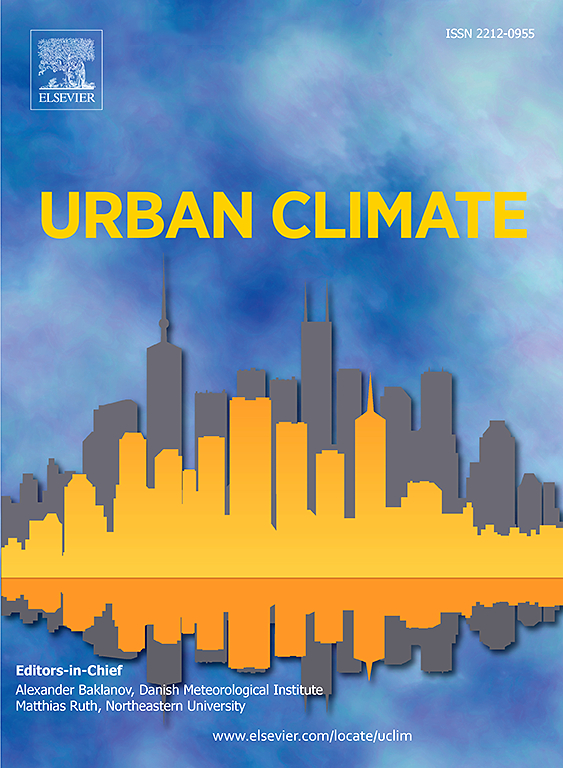通过绿色基础设施缓解城市热压力:一种气候服务方法
IF 6
2区 工程技术
Q1 ENVIRONMENTAL SCIENCES
引用次数: 0
摘要
随着全球城市人口的增长,城市居民越来越多地暴露在室外热环境中,这在气候变暖的情况下威胁着他们的健康。在本研究中,我们以一个中等城市为案例,从气候服务的角度描述了热压力的特征,并探讨了缓解热压力的方法。我们模拟了平均辐射温度,以精细的空间分辨率(2 米)和时间分辨率(1 小时)评估了冬季和夏季的通用热气候指数(UTCI)。我们对主要地方气候区不同年龄组的热条件进行了评估,并在四种方案中考察了增加绿色基础设施的益处。为此,我们提出了一个综合框架,其中包含一种提高树木覆盖率的算法。该算法通过用较大的树木替代较小的树木,同时种植新的、较大的树木来优化城市空间。这些组件共同构成了气候服务用户可以利用的定制工具。市中心是老年人口最多的地方,也是热暴露最严重的地方,在强热和极强热压力下的时间最长。树冠覆盖率提高了两倍多,UTCI 平均降低了 2.1 °C,在一天中最热的时段降低了 3.1 °C。这些研究结果表明,所提出的框架非常适合气候敏感型应用,并为城市评估和设计通过增加树木覆盖率来缓解热应力的策略提供了一个用户友好、成本效益高的工具。本文章由计算机程序翻译,如有差异,请以英文原文为准。
Mitigating urban heat stress through green infrastructure: A climate service approach
As the global urban population grows, city dwellers are increasingly exposed to outdoor thermal conditions that threaten their well-being in a warming climate. In this study, we characterized the heat stress and addressed its mitigation from a climate service perspective using a mid-sized city as case study. We simulated mean radiant temperature to assess the Universal Thermal Climate Index (UTCI) at fine spatial (2 m) and temporal (1 hr) resolutions for winter and summer. Thermal conditions were evaluated for different age groups across key Local Climate Zones, and the benefits of increased green infrastructure were examined across four scenarios. To achieve this, we proposed a comprehensive framework that incorporates an algorithm to enhance tree cover. This algorithm optimizes urban spaces by replacing smaller trees with larger specimens, coupled with planting new, larger trees. Together, these components form a customized tool that climate service users can leverage. The city center, home to the largest elderly population, featured highest heat exposure, with the greatest number of hours under strong and very strong heat stress. Increasing tree canopy cover by more than two-fold reduced the UTCI by up to 2.1 °C on average, and as much as 3.1 °C during the hottest hours of the day. These findings showed that the proposed framework is well-suited for climate-sensitive applications and offers a user-friendly, cost-effective tool for cities to assess and design strategies to mitigate heat stress by increasing tree coverage.
求助全文
通过发布文献求助,成功后即可免费获取论文全文。
去求助
来源期刊

Urban Climate
Social Sciences-Urban Studies
CiteScore
9.70
自引率
9.40%
发文量
286
期刊介绍:
Urban Climate serves the scientific and decision making communities with the publication of research on theory, science and applications relevant to understanding urban climatic conditions and change in relation to their geography and to demographic, socioeconomic, institutional, technological and environmental dynamics and global change. Targeted towards both disciplinary and interdisciplinary audiences, this journal publishes original research papers, comprehensive review articles, book reviews, and short communications on topics including, but not limited to, the following:
Urban meteorology and climate[...]
Urban environmental pollution[...]
Adaptation to global change[...]
Urban economic and social issues[...]
Research Approaches[...]
 求助内容:
求助内容: 应助结果提醒方式:
应助结果提醒方式:


